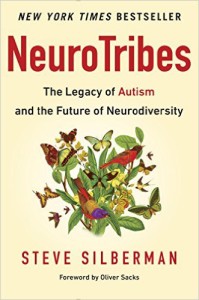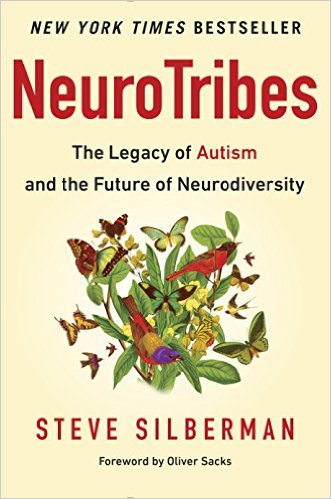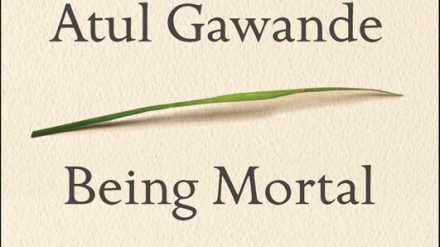
Only in the last two decades has a consensus about autism developed among the psychiatrists, psychologists, and neurologists who traffic in the science of the mind. Even today, thousands, perhaps millions, flock to the defense of the quacks and charlatans who perpetuate the myth that autism is caused by vaccines, especially the MMR vaccine for the childhood afflictions of measles, mumps, and rubella. That theory, never demonstrably reasonable, has been soundly disproved. This eye-opening book about autism makes that abundantly clear.
Estimated reading time: 5 minutes
More sensible people, and all but a handful of psychological practitioners, agree today that “most cases of autism are not rooted in rare de novo mutations [much less vaccinations] but in very old genes that are shared widely in the general population while being concentrated more in certain families than others. Whatever autism is, it is not a unique product of modern civilization.” Science journalist Steve Silberman reports this finding from DNA research in the closing pages of his richly detailed and insightful study of the subject, NeuroTribes: The Legacy of Autism and the Future of Neurodiversity. In the hundreds of pages that precede this explanation, Silberman traces the history of autism throughout the twentieth century, when it was first became subject of close study.
NeuroTribes: The Legacy of Autism and the Future of Neurodiversity by Steve Silberman ★★★★★
“Asperger’s syndrome” or “autism?”
Today, most of us nonspecialists look at autism, narrowly defined, as one sector of the broad continuum familiarly known as the autism spectrum. Technically, Asperger’s syndrome refers only to some individuals on the spectrum, not all. As Silberman explains, this concept was a very long time coming. For most of the past century, autism was regarded as a form of childhood schizophrenia, an illness with neurological roots that is far rarer and much different from autism. However, for many decades, those diagnosed with the condition were almost invariably committed to the sort of institutions that Charles Dickens might have deplored. Sadly, so-called “expert” psychiatrists and psychologists — the reigning authorities in the field — were responsible for this tragic misconception. Most of them should have known better. Some did.
Working in Vienna in the 1930s and 40s, the extraordinary child psychiatrist Dr. Hans Asperger led a team of specialists who studied children with a wide range of intellectual abilities and troubling physical behavior. Their subjects ranged all the way from youngsters who screamed and flapped their hands uncontrollably and appeared not to learn language at all to the few brainy and articulate youngsters whom Asperger called his “little professors.” Asperger viewed these conditions as occurring along a continuum. Even more important, he insisted that every individual child could be helped with carefully tailored treatment — and he proved that contention with his patient and understanding care.
The syndrome’s history probed in this book about autism
Unfortunately, a European-American child psychiatrist in Baltimore named Leo Kanner also “discovered” autism in 1943, a year before Asperger published his groundbreaking paper on the subject. Kanner focused only on “high-functioning” children. He regarded autism as “monolithic by definition, limited to childhood, and exceedingly rare.” To Kanner, “autism was not merely an eccentric cognitive style or an alternate mind-set. It was a tragic form of childhood psychosis, akin to schizophrenia, caused by inadequate parenting.” Kanner wrote in English, Asperger in German.
For decades after the war, no doubt partly because Asperger had worked in a Nazi-controlled country, his paper was not translated. It remained unknown to the profession. Kanner’s harsher and much more restrictive view of the condition excluded nonverbal children and denied the existence of adults with autism — and his view, which came to be almost universally adopted in the United States, caused several decades of psychiatrists and psychologists to blame parents for their children’s challenges.
Are programmers autistic?
An editor at Wired, Silberman’s journey toward understanding the history of autism began in Silicon Valley, when he noted “a disproportionately high demand for autism services in the cradle of the technology industry.” A supervisor at Microsoft reported to him, “All of my top debuggers have Asperger syndrome. They can hold hundreds of lines of code in their head as a visual image. They look for the flaws in the pattern, and that’s where the bugs are.”
Pursuing this observation into the history of science, he learned about a number of outstanding researchers who demonstrated behavior that unquestionably would place them on the spectrum. For example, the late Oliver Sacks had written about the British chemist and physicist, Henry Cavendish, identifying him as a classic example of autism; Silberman refers to others. Sacks, who wrote the Foreword to NeuroTribes, was one of the many people he interviewed in depth in the course of his research.
In the final analysis, Silberman writes, the focus on autism has led to “the emergence of the concept of neurodiversity: the notion that conditions like autism, dyslexia, and attention-deficit/hyperactivity disorder (ADHD) should be regarded as naturally occurring cognitive variations with distinctive strengths that have contributed to the evolution of technology and culture rather than mere checklists of deficits and dysfunctions.” Which is altogether a far more humane and satisfying viewpoint than the misconceptions that held sway for most of human history.
For related reading
You might also enjoy Science explained in 10 excellent popular books.
If you enjoy reading nonfiction in general, you might also enjoy:
- 10 great biographies
- My 10 favorite books about business history
- 20 top nonfiction books about history
- The 10 most memorable nonfiction books of the decade
And you can always find my most popular reviews, and the most recent ones, on the Home Page.




























As an individual on the spectrum, I’m curious to read this book, and grateful for your review. Unfortunately, I haven’t found much in the way of “treatments” for coping, so I’ll be keenly interested if Asperger’s original work and methods are described in detail.
The only concern I have with the review is that the anecdote of Silverman’s experience is that the programmers visualize their code. This is still, but a single manifestation of a type of autism, similar to Daniel Tammet, but not all people on the spectrum deal with visualizing in quite the same way. I can only hope that the author expands beyond such a limiting characterization. Temple Grandin, being the high profile advocate that she is, describes this well in her TED talk, which I would recommend to anyone interested in this field.
Regardless of the book, I would recommend one thing to your readers Mal, that they take each conversation one person at a time, knowing that everyone is different in their own sweet way, and that while it may be uncomfortable, there are great rewards behind discomfort, which seems to be true of many things.
Thank you very much, Christopher. You obviously know a great deal more about this subject than I do, and it’s clearly not just on the basis of your personal experience. I should point out, though, that Silberman does not assert that all those on the autism spectrum visualize in the same way; on the contrary. If I gave a different impression, I apologize. It was not intended. And your recommendation in the final paragraph of your comment is excellent: good advice for all people at all times!
Thanks for sharing – it’s going on my reading list! (It may also be unfair to have concerns based on a few lines, but I’ll have to dig in more on my own.) Thanks for your work!